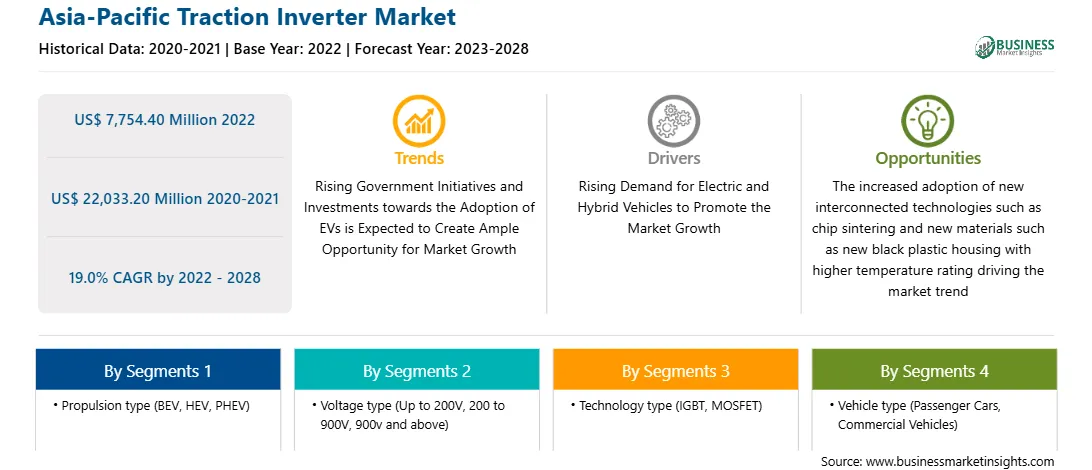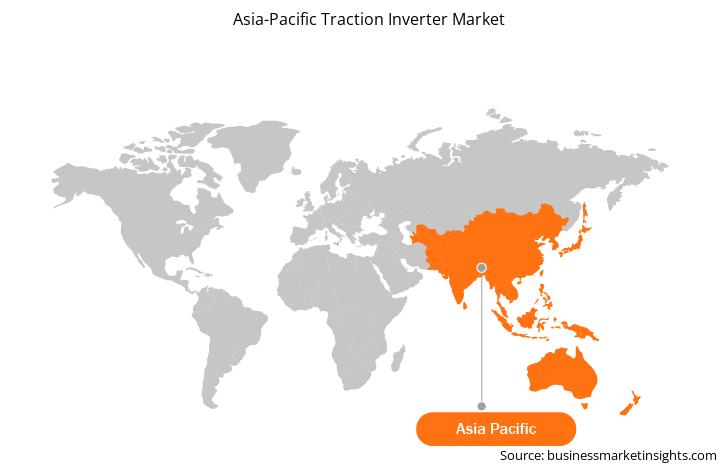The most important physical parts of a traction inverter are semiconductor power modules. By controlling the energy transfer from battery to motor and vice versa, it controls motor speed and torque. Power modules with high performance are required sue to rising demands for electric and hybrid vehicles. However, the shortage of semiconductors and chips worldwide is affecting the growth of the market adversely. Amid pandemic the demand for semiconductors surged dramatically driven by digital transformation. Chips demand for both devices and data centers shoot up in 2020 and 2021. The PC rose by 50% and the cloud computing data center chips purchases went up by 30%. With rising adoption of digitization and smart driver assistance systems the automotive industry’s demand for chips will probably rise to US $500 in 2022. The automotive industry is largely affected by the chip shortage. Such localization effort will take time increasing the capacity of chip manufacturing is a time taking process and hence, the traction inverter market will continue to be affected by semiconductor and chips shortage.
Market Overview
APAC continent comprises several developing economies such as China, India, and South Korea, and developed economies such as Japan and Australia. The economy of the region is gaining traction, owing to the numerous technological and infrastructural developments. The region has a robust automotive sector, which is supported by the growing automotive manufacturing industry in countries such as China, India, and South Korea. Countries such as India, China, South Korea, and Japan are among the leading vehicle manufacturing countries worldwide. Growing environmental concerns (due to rising exhaust emissions), enactment of stringent emissions and fuel economy norms, and increasing government initiatives, such as subsidies and benefits, to improve the adoption rate of electric vehicles and to replace heavy-duty diesel and gasoline-run buses with zero-emission electric buses, are expected to propel demand for and growth of the high-performance vehicle market. Variations in government policies and subsidies, on the other hand, are likely to have an impact on the development of electric buses.
Strategic insights for the Asia-Pacific Traction Inverter provides data-driven analysis of the industry landscape, including current trends, key players, and regional nuances. These insights offer actionable recommendations, enabling readers to differentiate themselves from competitors by identifying untapped segments or developing unique value propositions. Leveraging data analytics, these insights help industry players anticipate the market shifts, whether investors, manufacturers, or other stakeholders. A future-oriented perspective is essential, helping stakeholders anticipate market shifts and position themselves for long-term success in this dynamic region. Ultimately, effective strategic insights empower readers to make informed decisions that drive profitability and achieve their business objectives within the market.

| Report Attribute | Details |
|---|---|
| Market size in 2022 | US$ 7,754.40 Million |
| Market Size by 2028 | US$ 22,033.20 Million |
| Global CAGR (2022 - 2028) | 19.0% |
| Historical Data | 2020-2021 |
| Forecast period | 2023-2028 |
| Segments Covered |
By Propulsion type
|
| Regions and Countries Covered | Asia-Pacific
|
| Market leaders and key company profiles |
The geographic scope of the Asia-Pacific Traction Inverter refers to the specific areas in which a business operates and competes. Understanding local distinctions, such as diverse consumer preferences (e.g., demand for specific plug types or battery backup durations), varying economic conditions, and regulatory environments, is crucial for tailoring strategies to specific markets. Businesses can expand their reach by identifying underserved areas or adapting their offerings to meet local demands. A clear market focus allows for more effective resource allocation, targeted marketing campaigns, and better positioning against local competitors, ultimately driving growth in those targeted areas.

APAC Traction Inverter Market Segmentation
The APAC traction inverter market is segmented into propulsion type, voltage type, technology type, vehicle type and country. Based on propulsion type, the market is segmented into BEV, HEV, PHEV and others. The BEV segment registered the largest market share in 2022.
BorgWarner Inc.; Continental AG; Curtiss-Wright Industrial Group; Dana TM4; Delphi Technologies Plc; Hitachi, Ltd.; Mitsubishi Electric Corporation; Siemens AG; Toshiba Corporation; and Voith GmbH & Co. KGaA are the leading companies operating in the traction inverter market in the region.
The Asia-Pacific Traction Inverter Market is valued at US$ 7,754.40 Million in 2022, it is projected to reach US$ 22,033.20 Million by 2028.
As per our report Asia-Pacific Traction Inverter Market, the market size is valued at US$ 7,754.40 Million in 2022, projecting it to reach US$ 22,033.20 Million by 2028. This translates to a CAGR of approximately 19.0% during the forecast period.
The Asia-Pacific Traction Inverter Market report typically cover these key segments-
The historic period, base year, and forecast period can vary slightly depending on the specific market research report. However, for the Asia-Pacific Traction Inverter Market report:
The Asia-Pacific Traction Inverter Market is populated by several key players, each contributing to its growth and innovation. Some of the major players include:
The Asia-Pacific Traction Inverter Market report is valuable for diverse stakeholders, including:
Essentially, anyone involved in or considering involvement in the Asia-Pacific Traction Inverter Market value chain can benefit from the information contained in a comprehensive market report.